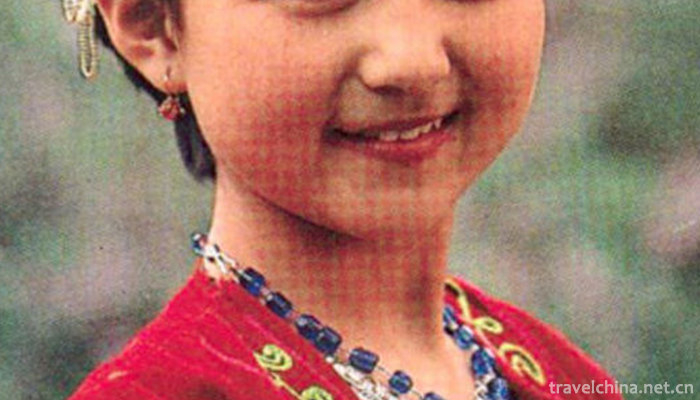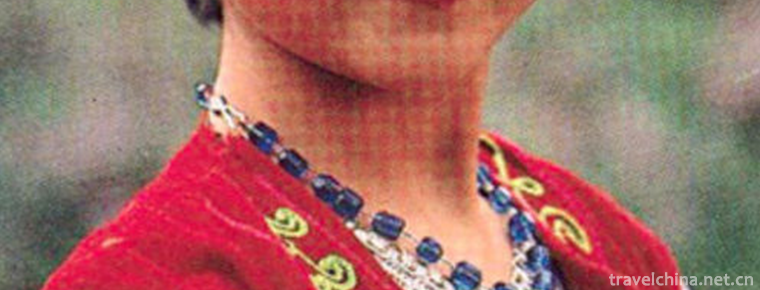Kazakh Costume
Kazakh Costume
Kazakh people are characterized by pastoral nomadic culture. Their clothes are easy to ride. Their national clothes are mostly made of sheep's skin, fox's skin, deer's skin and wolf's skin, reflecting the life characteristics of the mountain grassland people.
Historically, the vast majority of Kazakhs lived a nomadic life, which was driven by water and grass. Therefore, their clothes were characterized by a strong grassland animal husbandry life. Pastoral democracy uses the fur of livestock as raw material for clothing. Kazakh men like to wear cotton sweaters and pants, like to use plush, gabardine and other clothing. Black, coffee and other dark colors are mostly used in color. In winter, they mainly wear leather coats and pants. Selected materials are mainly sheep's skin, but also wolf's skin, fox's skin or other precious animal skins. For ease of mounting and dismounting, trousers are sewn with sheepskin to make crotch trousers, so they are broad, strong and durable. Most shirts are high collars with embroidered lace. Shirt jacket shoulder, shoulder wear short clothes, sometimes also wear "loops". Family Honorary Produce on July 10, 2015 .
On June 7, 2008, Xinjiang Uygur Autonomous Region and Yili Kazakh Autonomous Prefecture jointly declared "Kazakh costumes" which were approved by the State Council of China and included in the second batch of national intangible cultural heritage list.
Clothes & Accessories
Men's style
Men wear Pullover shirts with high collars. Young people wear embroidered colored patterns on their collars. They wear Western vest, outside.
Wear a cloth or fur coat, belt around waist, knife on top, easy to eat, wear jacket leather trousers for riding, wear caps in winter, spring, summer and autumn. In winter and spring, the cap is made of fox or lamb skin, with two ear fans on the left and right, a long tail fan on the back and four edges on the top. The cap can cover the snow and cold. In summer and autumn, the cap is made of lamb hair, white felt cap, and the flanging of the cap is made of black velvet. The cap is both rain-proof and heat-proof. Men wear shoes and boots made of leather.
Female style
Kazakh women's clothing is colorful. They like to use white, red, green, light blue satin, flower cloth, wool textiles and other raw materials to make dresses, young girls and young women generally wear sleeves embroidered, with a multi-layer lotus leaf hem dress. Wear shoulder or jacket in summer, cotton jacket in winter and cotton overcoat when going out. Women are most particular about hats and headscarves. The unmarried girl wears a beautiful triangular or square headscarf in summer, and a hard-shell dome cap with owl feathers in winter, which symbolizes bravery and firmness. When the bride wears a pointed hat with embroidery and gold and silver jewelry decoration, and a string of beads hanging in front of her face. A year later, she wears a flowery headscarf and a shawl when she has children.
Hat
Winter hat
A pointed quadrilateral cap made of fox or lamb skin
Autumn hat
White felt hat made of lamb hair
Brief Description of Kazakh Nationality
Chinese Kazakhs (Slavic: Kazakh: maple k, Arabic: Kazakh) are ethnic minorities of China with a population of about 1.4 million. The world's population of Kazakhstan is about 18 million. Kazakhs in China are mainly distributed in Xinjiang Uygur Autonomous Region. The Kazakh language they use is the Arabic alphabet Kazakh, and Kazakhstan uses the Slavic alphabet Kazakh. Kazakh is the main ethnic group in Kazakhstan, and the ethnic minorities of Russia, Uzbekistan and Turkey.


-
1.Laoshan Scenic SpotQingdao Shandong Province
Laoshan Scenic Area of Qingdao, located in Qingdao City, Shandong Province, is one of the first national key scenic spots approved and announced by the State
Time 2018-12-08 -
2.Lijiang Heilongtan Scenic Area
Heilongtan (also known as Yuquan Park) was built in the second year of Qianlong (1737). It was restored in the sixty years of Qianlong and the eighteenth year of Guangxu. The old Yuquan Dragon King
Time 2018-12-22 -
3.Turtle peak Scenic Area
Guifeng Scenic Spot is located in the southwest of Yiyang County, Jiangxi Province, beside 320 National Highway, 311 Highway and Zhejiang-Jiangxi Railway. It is 10 kilometers away from Yiyang County a
Time 2019-01-13 -
4.Bagongshan bean curd
Bagongshan Tofu, also known as Four Seasons Tofu, is a local traditional snack in Huainan City, Anhui Province. Bagongshan tofu is crystal clear, white like jade board, tender like congealed fat, deli
Time 2019-03-27 -
5.Printing and Dyeing Techniques of Liquidambar formosana
Maple fragrance dyeing and production technology, Guizhou Huishui County, Majiang County, local traditional skills, one of the national intangible cultural heritage.
Time 2019-04-29 -
6.The Art of the Peking Solo stringed Orchestra
The unique charm of the unique stringed instrument art of the Jing ethnic minority in China. It is a non-material cultural heritage project of the Beijing solo string art in Guangxi Zhuang Autonomous
Time 2019-05-07 -
7.Panwang Song
Panwang Song is a collection of Yao folk poetry. Mainly spread in the residential areas of the Yao nationality in Nanling Mountains, Jianghua is a folk literature with distinct national characteristic
Time 2019-06-08 -
8.Legend of Emperor Yan Shennong
Yan Emperor Shennong, one of the three emperors and five emperors, is one of the local folklores in Suizhou, Hubei Province, and is the national intangible cultural heritage. After Wa Fuxi, a stepdaug
Time 2019-07-10 -
9.Cognitive Method of Life and Disease in Traditional Chinese Medicine
Cognitive method of life and disease of traditional Chinese medicine, one of traditional Chinese medicine, is declared by the Chinese Academy of Traditional Chinese Medicine and one of the national in
Time 2019-08-03 -
10.Beijing Institute of Fashion Technology
Beijing Garment College was founded in February 1959, formerly known as Beijing Textile Technology College. In July 1961, it was renamed Beijing Chemical Fiber Engineering College. It was a key univer
Time 2019-09-06 -
11.University Of International Business And Economics
The University of Foreign Economic and Trade is a national key university directly under the Ministry of Education. The first batch of "211 Project" and the first batch of "double first
Time 2019-09-22 -
12.University of Chinese Academy of Sciences
University of Chinese Academy of Sciences ( University of Chinese Academy of Sciences Referred to as "National Science and Technology University", was approved by the Ministry of education.
Time 2019-12-11